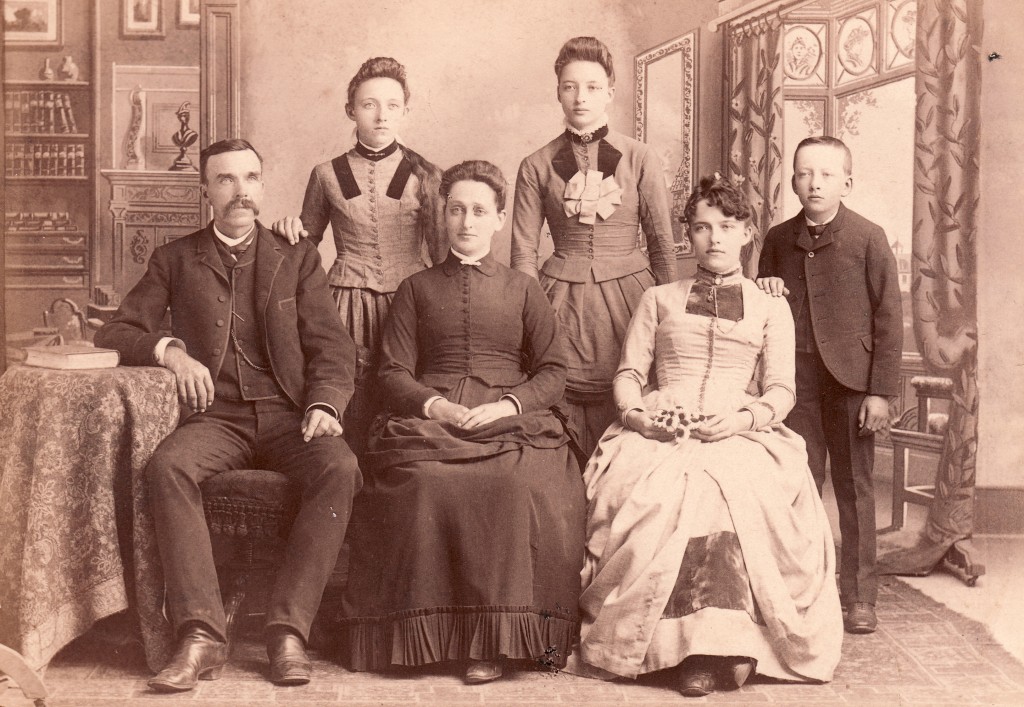 |
Securing and
Sharing Your Family Heritage and Links to Resources |
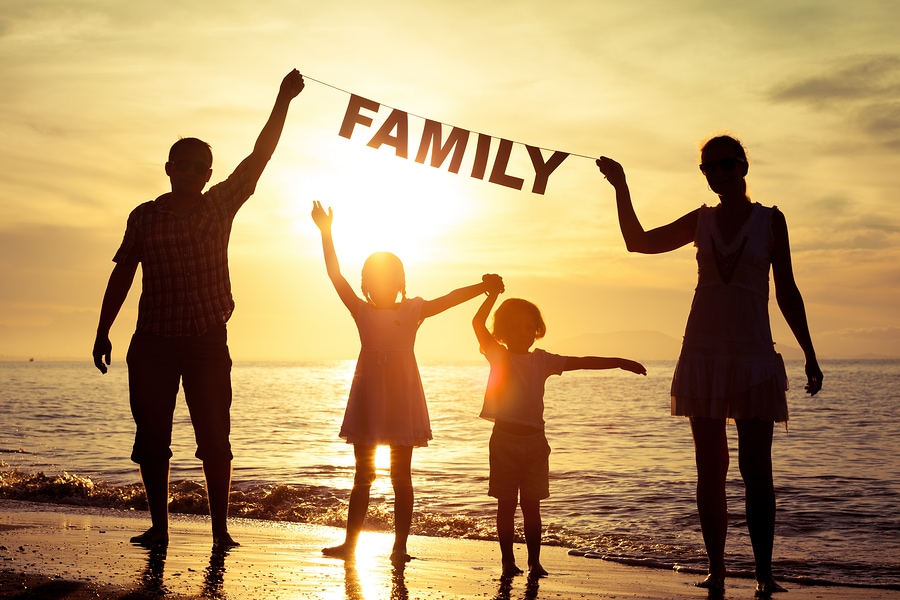 |
His History Preservation Mission and Methods
| We all want our
families to be known and remembered by future generations and
our history and heritage preserved.
However, you and your family and the lives lived will be forgotten to future generations unless specific actions are taken now to collect, organize, and preserve records and other representations of the many events, relationships, and activities that represent your family heritage. Our generation is the bridge between our past and future generations to come. |
|
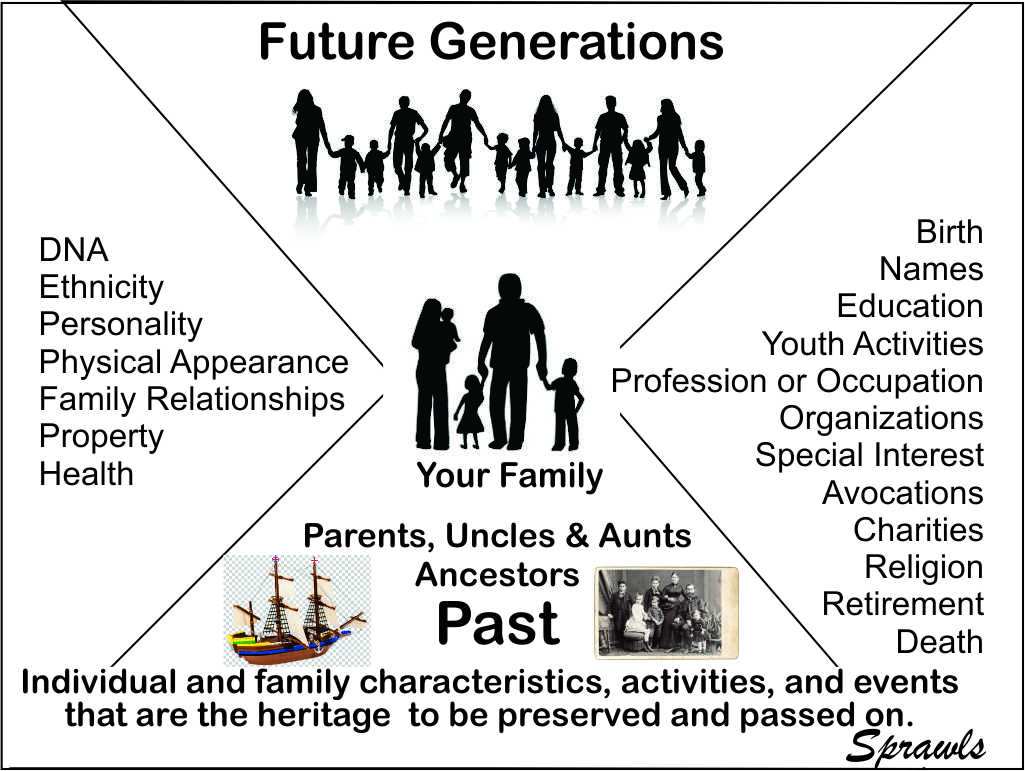 |
|
| Many of the records that
are now created and preserved for individuals are related to
dying and not living. These include obituaries, death
certificates, and Social Security records. While these are of
interest to genealogists they do not provide details of a
person's life. Our project here is to encourage and help families develop and preserve records and representations of lives lived and family relationships in the context of a permanent Family Heritage. It is important that this should be an activity involving the different generations within a family, each making specific contributions. The project consists of four specific activities that families are encouraged to follow as described below along with links to more detailed information. |
|
| 1. Begin Family Discussions Including Different Generations. | |
| It’s a
Multigenerational Family Activity. First, get the different
family generations together, developing interest, and each
contributing their knowledge and experience to the effort.
Senior generations have the memories and experiences associated
with previous generations. Younger family members have
experience with modern technology, digital photography, and
computers that are crucial to this effort. More Details at: http://www.sprawls.org/heritage/familytalk |
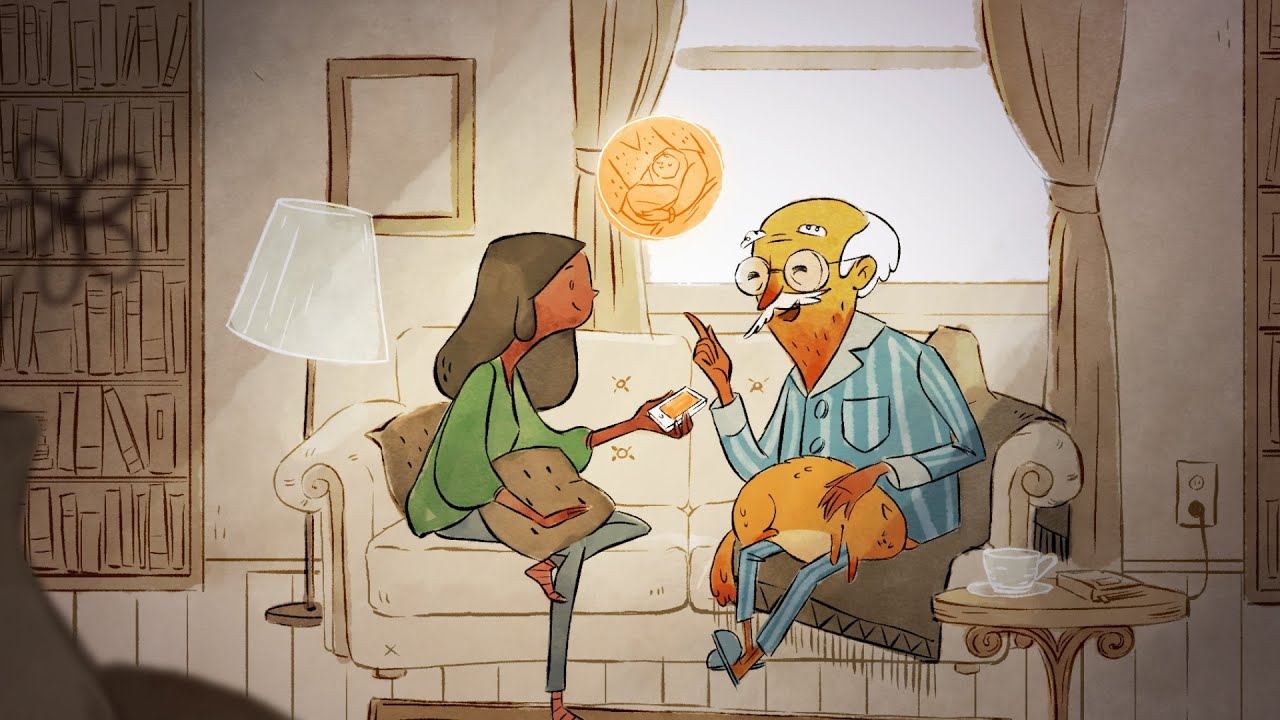 |
|
2. Collecting and Digitizing Family Photographs |
|
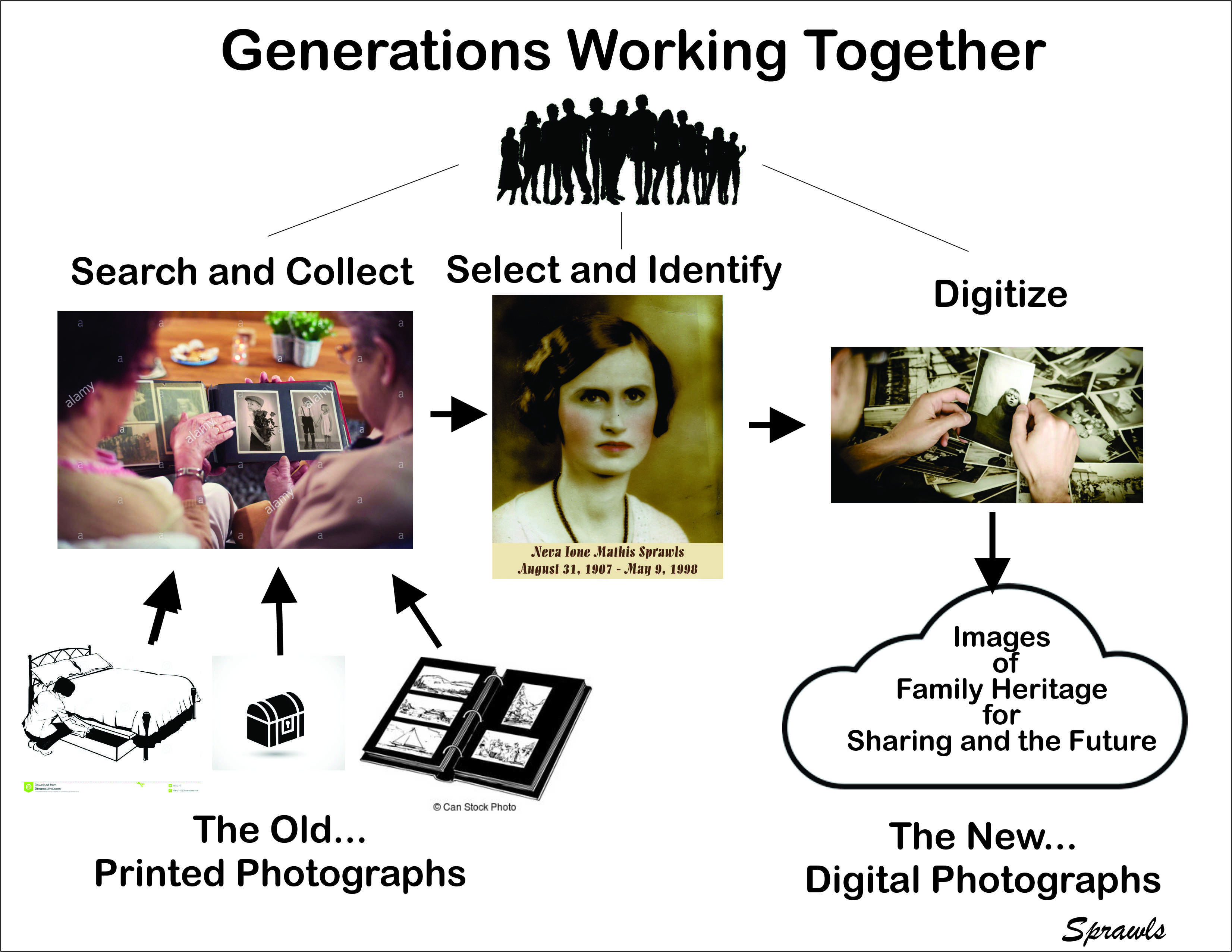 |
|
| Begin by Looking Under the Bed . . . not for ghosts, but that is where many have put away things from the past, especially old family photographs. A typical family has a collection of old printed photographs or slides. Many are not labeled with names, dates, or other information. In that form they are completely useless for passing on the family heritage. Even the labeled photographs in albums will eventually be lost and cannot be passed on to future generations. It is the digitized pictures and records that can be preserved, published, and shared among families for future generations. Now is the time to get family members, especially cousins, involved in the search for old photographs. Select some that provide good visual connections to the earlier generations. Our living senior generations can identify individuals in some of the photographs and remember things about their lives. Our younger generations can digitize the selected photos and prepare them for publishing on the web or other forms of sharing. More Details at: http://www.sprawls.org/heritage/familyphotos |
|
3. Developing Biographies and Preserving Memories |
|
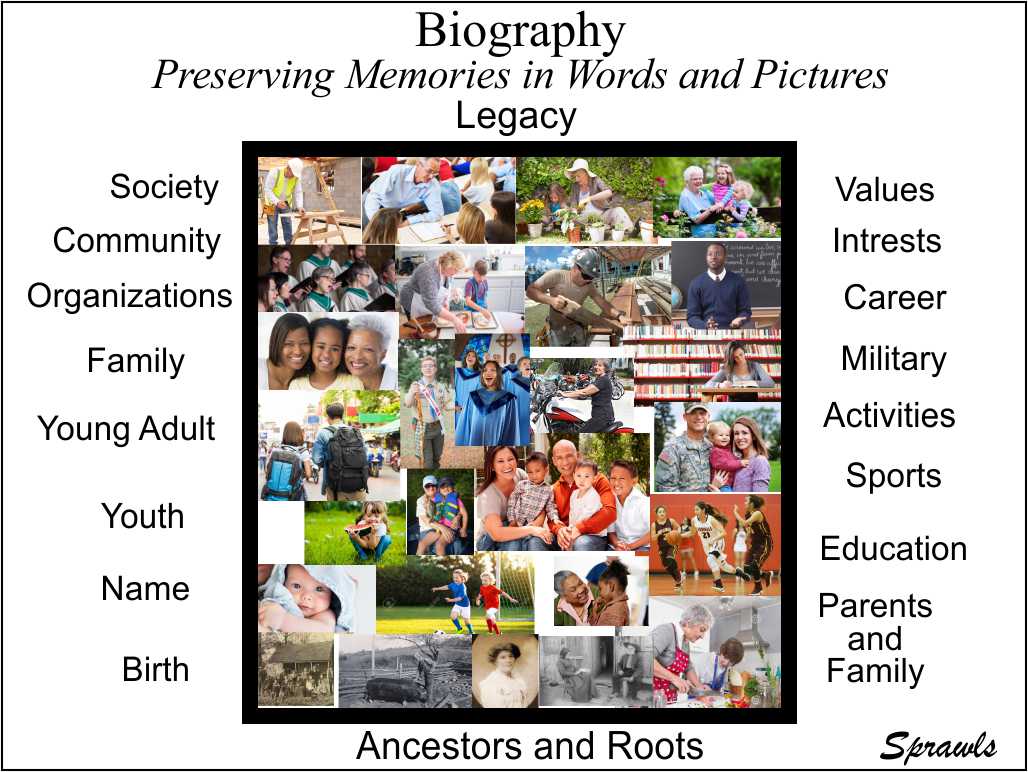 |
|
| Biographies Are About Lives Lived.
In addition to properly preserved photographs, it is written
stories, or biographies, of a person’s life that contribute to
the preservation of family heritages. The biographies can range
from a short paragraph to several pages. Here we distinguish
between biographies and obituaries. Obituaries are reports of
one’s death and related details. While obituaries often contain
some biographical information, it is usually related to the
death of the individual. For many of our deceased family members most of the stories of their lives are in the minds and memories of those now living. The urgency is to discuss with others, and preserve these memories as written words. More Details at: http://www.sprawls.org/heritage/biography |
|
4. Preserving and Sharing Memorials on the Web |
|
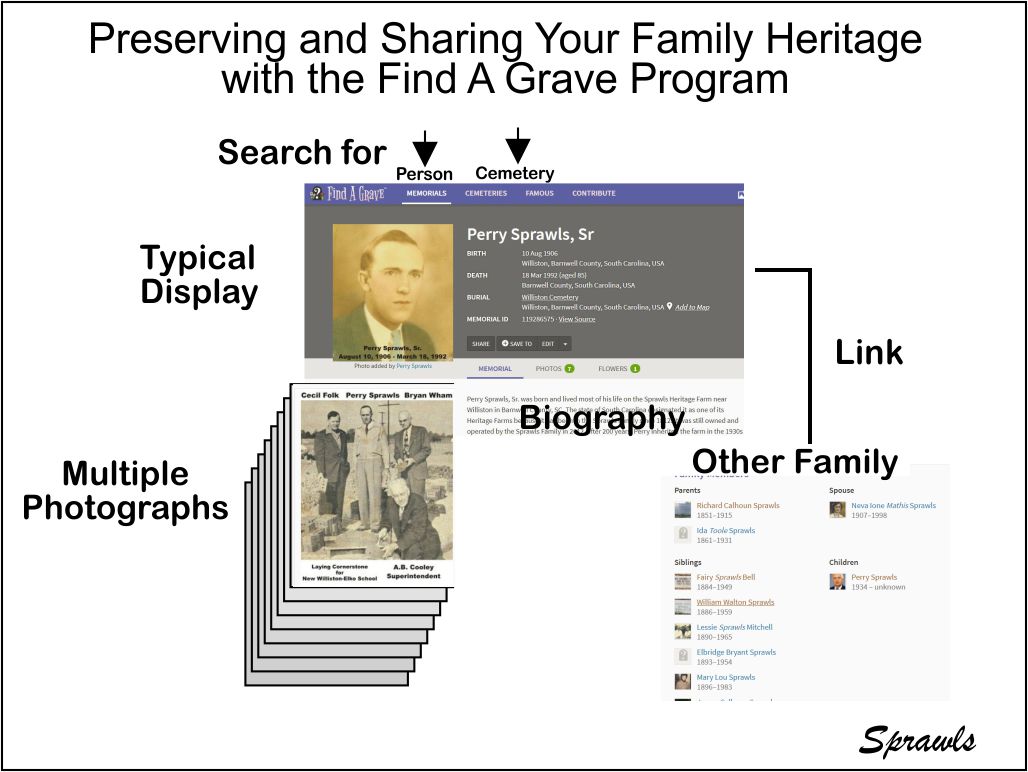 |
|
| There are options for publishing and preserving
family heritages but the Find A Grave organization on the web provides many advantages. First, it is free both to post family information and search for other family connections. It provides a permanent webpage for each individual with the opportunity to post photographs, biographies, and easy-to-follow links to other family members across many generations. Complete details on the features and how to use the Find A Grave opportunity are on the website: http://www.sprawls.org/heritage/memorial/ Now is the Time! Family members are rapidly going away as memories fade, and pictures and other items are lost or destroyed. We can prevent that from occurring by families working together in the four activities described here. |
|